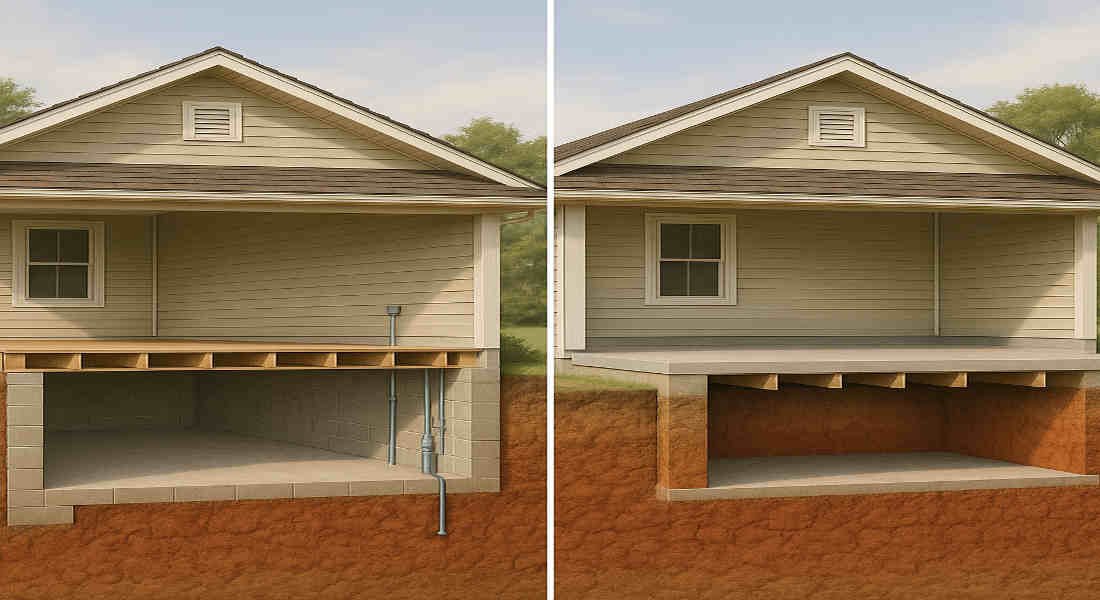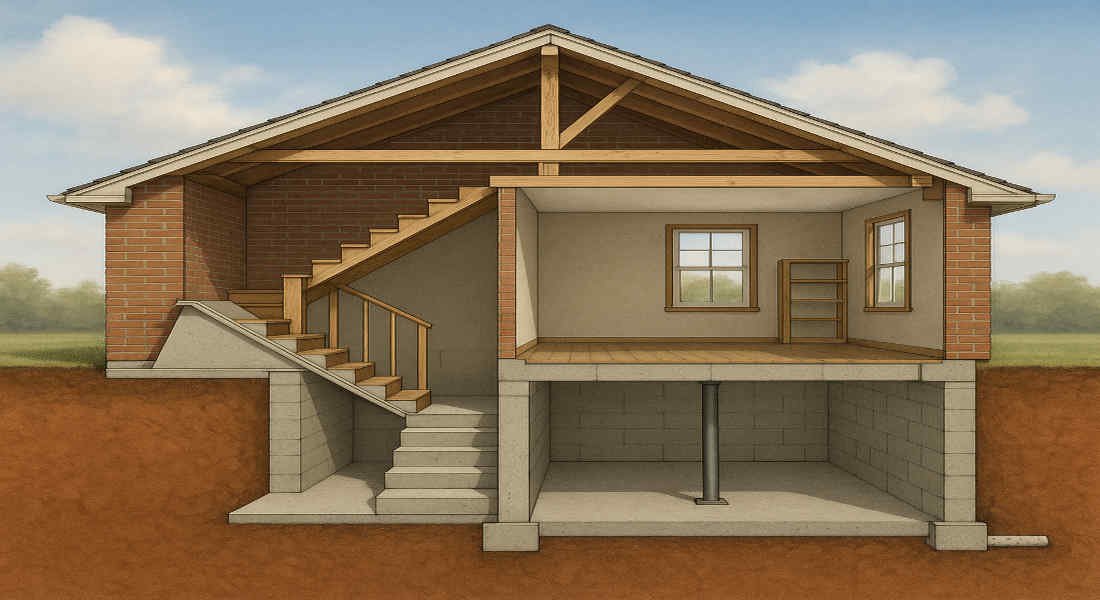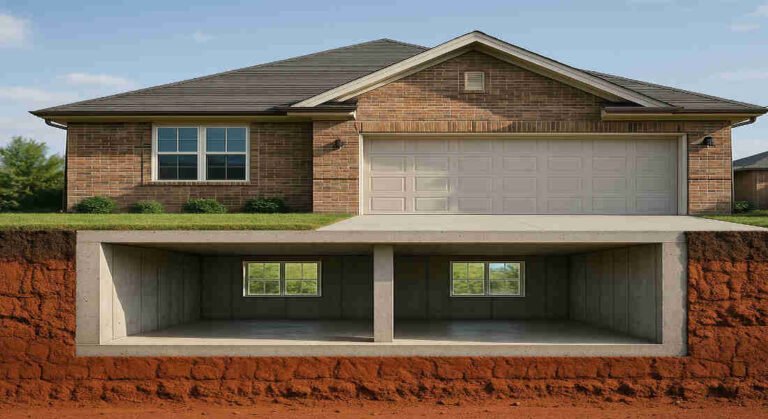Homes in Oklahoma typically do not have basements, a characteristic influenced by several regional factors. The state’s prevalent red clay soil absorbs moisture and expands, which can cause pressure and water seepage issues in basements. Additionally, Oklahoma has a high water table, making basements prone to flooding. Building codes require foundations to be poured only below a shallow freeze line—approximately 18 inches deep—unlike in northern states, where deeper foundations make basements more practical. The cost of constructing a basement in Oklahoma is also significantly higher due to these soil and water challenges, and there is generally low demand and fewer contractors experienced in basement construction. Instead of basements, many homes are built on slab foundations, and residents often rely on specialized storm shelters for tornado protection, as basements may not provide adequate safety during severe storms. These combined factors explain why basements are uncommon in Oklahoma homes.
History of basements in Oklahoma and why they are not as common as in other states
Basements have a varied history across the United States, and Oklahoma is no exception. The state’s geological makeup plays a significant role in how homes are constructed. Many areas of Oklahoma are situated atop expansive clay soil, which can swell when wet and shrink during dry periods. This inconsistency can lead to foundation issues.
As communities grew, so did the preference for slab-on-grade construction due to its lower cost and reduced risk of water damage.
The prevalence of tornadoes also influenced home design choices. Many Oklahomans opt for storm shelters over basements as a safer alternative during severe weather events. Consequently, while basements are seen as desirable in some regions, they remain less common in Oklahoma’s unique environment.
The benefits and drawbacks of having a basement in Oklahoma
Having a basement in Oklahoma can offer several advantages. These spaces provide extra storage, reducing clutter in the main living areas. They can also serve as recreational rooms or home offices, enhancing your home’s functionality.
On the other hand, there are notable drawbacks. The state’s clay soil can lead to water drainage issues, increasing the risk of flooding and mold growth. This could necessitate costly waterproofing measures.
Homeowners may face challenges related to heating and cooling, as basements often have different temperature dynamics than above-ground spaces.
Thus, while basements present unique opportunities for use and expansion, they come with their own set of challenges that homeowners should carefully consider.
You may also read (navigating permits for tiny homes on wheels).
Factors that may affect the construction of a basement in Oklahoma
Several factors influence the feasibility of constructing a basement in Oklahoma. One key aspect is the soil type. Certain soils may be more prone to flooding or shifting, making basements less practical in these areas.
Regulations can dictate the depth of foundations and the permissible materials for construction. It’s essential to consult with local authorities before starting any project.
In areas where it’s high, basements could face moisture issues unless proper drainage systems are installed.
Weather patterns also play a role; heavy rains and storms can increase the risk of flooding in underground spaces. Evaluating these elements before embarking on basement construction helps ensure a successful outcome tailored to Oklahoma’s unique conditions.
The average cost of adding a basement to an existing home in Oklahoma
The average cost typically ranges from $20,000 to $50,000. This price varies based on several factors.
The size of the basement plays a crucial role in determining the final cost. Larger spaces will naturally require more materials and labor. Additionally, local building codes and regulations may influence expenses.
If your property has rocky or unstable soil, excavation could become more challenging and expensive.
Homeowners should also consider finishing costs for creating livable space inside the basement once it’s built. These enhancements can add thousands to the overall project budget, especially if plumbing or electrical work is needed.
It’s wise to consult with local contractors who can provide tailored estimates based on your home’s specific requirements.
You may also read (does extreme makeover home edition really take a week).
Alternative options for additional living space in Oklahoma homes
For those looking to expand their living space without the complications of a basement, Oklahoma offers several creative alternatives. Many homeowners opt for building an addition to their existing structure. This can be a simple way to gain extra square footage without diving into the challenges associated with underground construction.
These spaces often offer ample room and can be customized to suit personal preferences. Whether you want an office, playroom, or guest suite, transforming these areas can add significant value and functionality to your home.
Outdoor options are also appealing in Oklahoma’s favorable climate. Decks and patios allow homeowners to enjoy more outdoor living space while enhancing aesthetic appeal. For those who prioritize garden space, creating a separate outdoor room—such as a gazebo or shed—can serve as both a storage and leisure area.
Storage solutions, such as sheds or even tiny homes on the property, are becoming increasingly common as well. Not only do these structures offer additional utility, but they also cater to hobbies such as gardening or woodworking that may require dedicated space.
While traditional basements may not be prevalent in Oklahoma homes, there are numerous ways for residents to creatively and effectively achieve their desired extra living areas.
You may also read (architecture the art of building beautiful homes).
